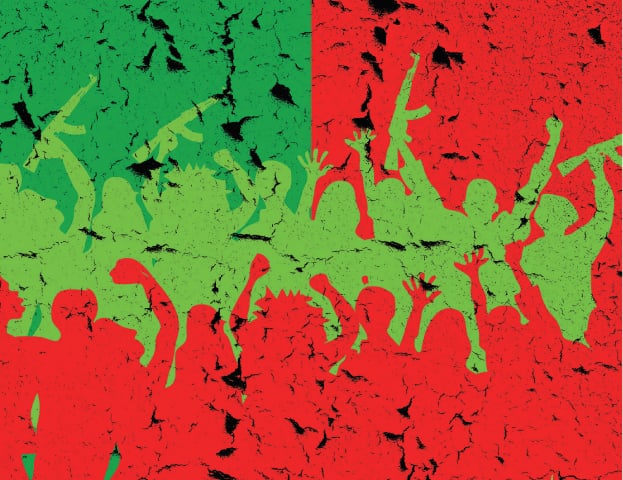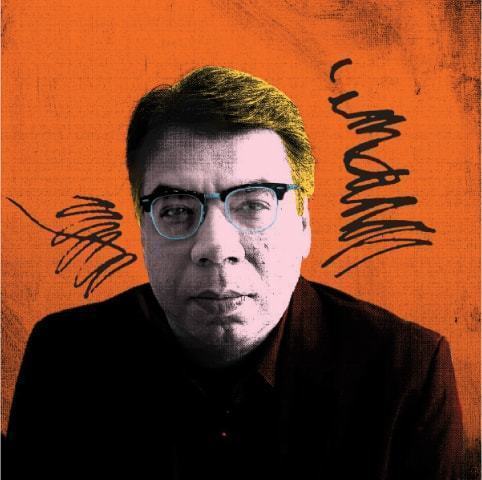
The ‘Students Solidarity March’ on November 29 seems to have ruffled some feathers. It was being thought, and even hoped, by some that the march would draw nothing more than the kind of negligent attention the so-called candle vigils attract.
But this wasn’t the case on November 29. Thousands of students from assorted universities and colleges poured out in almost every major city of the country, mostly demanding the restoration of student unions. Campus unions were first banned in 1984 by the Gen Zia dictatorship and then restored in 1989 by the first Benazir Bhutto regime. However, they were banned again in 1993, this time by the Supreme Court.
The manner in which the current government has reacted to the recent march suggests that a lot more happened, or was perceived to have happened, than just a handful of students marching and raising slogans. Prime Minister Imran Khan tweeted that he was in favour of restoring the student unions. But by the time the tweet was posted, his own government was arresting certain prominent student leaders and booking them for sedition.
Twitter trends such as #StudentsSolidarityMarch and #StudentsMarchExposed began to compete against each other. Some commentators on TV were hailing the march; some were cynically dismissing it as an ‘elitist’ one-off; while others were warning that the restoration of unions would again prompt violence on campuses.
As talk of reviving student unions gains traction, it is important to debunk misconceptions about Pakistan’s student politics history
The latter is the most frequently used reason against the demand for restoring the unions. In fact, PM Khan, even while supporting restoration, pointed out that the unions, before they got banned in 1984, had become violent. As I mentioned in an earlier column on these pages, this is the perception that has overshadowed the fact that, till the late 1970s, elected student unions were bastions of well-intentioned democratic activities, and platforms through which students were able to negotiate better academic, recreational and administrative arrangements on campuses.
One can claim that PM Khan too was drawing his information in this context from the negative perception associated with student politics. But I would like to share here an incident in which Khan actually faced the violence he was talking about. During the Indian cricket team’s tour of Pakistan in 1982-83, the fifth Test match of the series at Karachi’s National Stadium was repeatedly invaded by student activists.
Students were agitating against the growing government curbs on student politics in Karachi. During the mentioned match, a large group of students in the general stand invaded the ground when Khan was bowling. Some students charged towards an Indian batsman on strike. Others ran towards the batsman on the non-striker’s end who was standing with Khan. Khan pulled out a stump from the ground and threatened to use it against the charging students. However, before he could do this, cops entered the fray and chased away the students.

Indeed, campus politics, especially in Karachi and Lahore, had become increasingly violent. This was mainly due to the brutalisation of politics and society by the Zia dictatorship and the steady introduction of sophisticated weapons in the hands of the youth. These weapons began to arrive almost immediately after Pakistan agreed to fight the United States’ and Saudi Arabia’s proxy battles against the Soviet Union and Iran.
During my research (for my first book) in 2015, findings showed that there were just three incidents of gunfire in the country’s student politics between 1951 and 1977. The first was recorded at Karachi University in 1968, in which a student was arrested for possessing a pistol, but one that was never actually fired. Then a pistol was used for aerial firing during a student union election at the same university in 1974. There were no casualties. A pistol was also fired during the union elections at Lahore’s Punjab University in 1975 in which a student was killed.
However, between 1981 — the year Pakistan fully joined the so-called ‘Afghan jihad’ — and 1984, all hell broke loose and dozens of students lost their lives in gunfights between opposing student outfits — both from the left and the right — and between students and the police. It is thus important to correctly comprehend under what circumstances violence became a norm in student politics.
Secondly, ever since student activism played a major role in the movement against the Ayub regime in the late 1960s, the state and governments in Pakistan often start to worry every time students manage to exhibit an impressive show of strength. Therefore, the containment of student activism was also a reason to slap a ban on student unions in 1984, and so is the desire to retain this ban.
What gets missed in this urge to keep a lid on student politics, is the important underlying facts behind student uprisings and violence. For example, and again as I mentioned in a previous column, most scholars who studied the global rise and fall of student activism between the 1960s and 1970s, point out that student violence and agitation mushroomed in the 1960s when universities and colleges failed to accommodate the large influx of middle-class students in that decade.
The students’ anger towards the logistical and administrative problems caused by this influx boiled over and was expressed through political action. Student activism receded when, in the 1970s, colleges and universities (in the West) managed to better accommodate the students.
The same thing happened in Pakistan in the 1960s. Pakistani universities and colleges also began to receive a large-scale influx of students. Then, in the 1990s, when most students began to join private educational institutions, politicised student unions fell out of favour. But as we are now seeing, this was a stopgap arrangement.
No one is talking about the damning 2009 and 2013 reports prepared by the British Council in Pakistan. The reports speak about a growing youth bulge in the country, with over 60 percent of the country’s population being under the age of 30. The reports’ findings warn that disillusionment among the youth would continue to grow due to political and economic instability, and this might lead many young people to adopt extreme measures.
We have already seen the growth of incidents in which educated young people have been involved in committing crimes or joining extremist organisations. The pouring out on to the streets of students on November 29 can also been explained and seen in this context.
In fact, this should actually encourage the state and government to restore the unions. Because unions can once again become conduits for the students to express their aspirations and concerns in a democratic manner, rather than become despondent, cynical and desperate; or worse, join clandestine extremist groups which, ever since the late 1990s, have been surreptitiously operating on campuses in the vacuum on campuses created by the absence of student unions.
Published in Dawn, EOS, December 8th, 2019













































